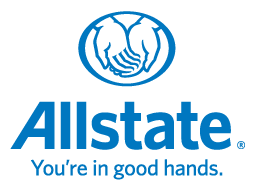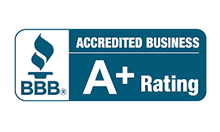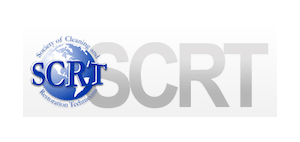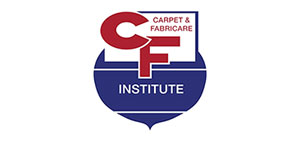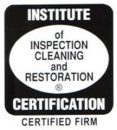Water damage can be a costly and dangerous problem for homeowners. It can cause significant damage to your property and pose health risks to you and your family. To address water damage effectively, you need to understand the different categories of water damage and their sources.
What are the 3 categories of water damage? The three categories of water damage are Category 1, Category 2, and Category 3. Each category represents a different level of contamination and potential risks.
Key Takeaways
- Water damage has three categories: Category 1, Category 2, and Category 3.
- The categories represent different levels of contamination and potential risks.
- Understanding the categories of water damage can help you address emergencies effectively.
- Proper assessment and prompt response are crucial in mitigating water damage.
- Preventive measures can help safeguard your property against water damage.
Category 1 Water Damage: Clean Water
Category 1 water damage, also known as clean water damage, results from water sources that are free of contaminants. Common examples include broken water supply lines, leaking faucets, and rainwater. Clean water damage is the least severe category of water damage, but it still requires prompt mitigation to prevent further damage and the growth of mold and mildew.
If your home experiences category 1 water damage, the first step is to identify and repair the source of the water. Once the source is fixed, you can begin the cleanup process.
| Steps for Cleaning Up Category 1 Water Damage: |
|---|
| 1. Turn off electrical power if the water has reached any electrical outlets. |
| 2. Remove any standing water using a wet vacuum or mop. |
| 3. Wipe down all surfaces with clean water and a mild detergent. |
| 4. Use fans and dehumidifiers to dry the affected area thoroughly. |
| 5. Monitor the area for any signs of mold or mildew growth and address promptly if needed. |
It is essential to address category 1 water damage promptly to prevent further damage and potential health hazards. In some cases, professional help may be required to ensure thorough cleanup and proper restoration of your property.
Category 2 Water Damage: Gray Water
Gray water damage is caused by water that is contaminated but not necessarily toxic. It may contain chemical, biological, or physical contaminants that can pose health risks if left unattended. Gray water can result from overflow or discharge from washing machines, dishwashers, or sinks, for example. Floodwaters from lakes and rivers can also be classified as gray water if they fall into this category.
Gray water damage poses a moderate risk to health and requires prompt attention to minimize its impact. Exposure to gray water can cause discomfort, irritation, and illness, especially if it comes into contact with open wounds or mucous membranes. Common symptoms of gray water exposure include skin rash, eye irritation, diarrhea, or nausea.
Dealing with gray water damage requires specific procedures to ensure safety and effectiveness. If you suspect gray water damage in your property, wear appropriate personal protective equipment, such as gloves, masks, and boots. Avoid direct exposure to the water and seek professional help to assess the extent of the damage and formulate a remediation plan.
| Source of Gray Water | Potential Contaminants |
|---|---|
| Kitchen sinks and dishwashers | Fat, oil, grease, food particles, detergents |
| Bathroom sinks, showers, and tubs | Soap, shampoo, hair, skin particles, bacteria, viruses |
| Washing machines | Soil, detergents, fabric softeners, bacteria, fungi |
| Floodwaters | Sediments, debris, organic matter, bacteria |
Gray water damage can be mitigated through various methods, depending on the extent and nature of the contamination. The process may involve removing the affected materials, cleaning and disinfecting the area, and drying the property to prevent mold growth and structural damage. Professional restoration services can provide comprehensive solutions to gray water damage, including water extraction, dehumidification, and air filtration.
Preventing gray water damage is possible by adopting simple measures that can reduce the risk of contamination. Regular maintenance of plumbing systems, appliances, and drainage systems can prevent clogs and overflows that can lead to gray water damage. Installing backflow prevention devices and sump pumps can also reduce the likelihood of floodwaters entering your property.
- Check plumbing pipes and fixtures regularly for leaks and cracks and repair them promptly.
- Use drain filters and screens to prevent clogs and debris buildup.
- Dispose of hazardous materials, such as chemicals, oils, and paints, properly and in accordance with local regulations.
- Install water alarms and shut-off valves to detect and prevent water leaks and floods.
By taking a preventive approach and being aware of the risks and consequences of gray water damage, you can protect your property and your health from potential harm. Remember, swift action is critical when dealing with water damage, so don’t hesitate to seek professional assistance when needed.
Category 3 Water Damage: Black Water
Category 3 water damage is the most severe and dangerous type of water damage that can occur in your home. Black water damage refers to highly contaminated water that may contain harmful bacteria, viruses, and toxic chemicals. This type of water damage can pose significant health risks to you and your family and requires immediate attention.
Black water can come from several sources, including sewage backups, flooding from rivers or streams, and standing water that has become stagnant. Exposure to black water can cause severe health problems such as diarrhea, vomiting, skin rashes, and respiratory issues. In some cases, it can even lead to long-term health problems such as liver or kidney damage.
Due to the high level of contamination, it is essential to hire a professional to handle black water damage. They have the expertise and equipment to safely remove the water, dry the affected areas, and prevent further damage to your property. It is crucial to wear protective gear such as gloves and masks when cleaning up black water damage to prevent exposure to harmful pathogens.
| Black Water Damage | Severity | Health Risks |
|---|---|---|
| Sewage backups | High | Bacterial infections, gastroenteritis, respiratory issues |
| Flooding from rivers or streams | High | Bacterial infections, skin rashes, respiratory issues |
| Standing water | High | Hepatitis A, E. Coli, Cryptosporidium infections |
Remember, black water damage is an emergency situation that requires immediate action. Without prompt and proper cleanup, black water damage can lead to severe health problems and property damage. Do not attempt to handle black water damage yourself, and contact a professional restoration company to handle the cleanup process.
Factors Determining Water Damage Category
The classification of water damage is critical in determining the appropriate response and mitigation measures. Several factors come into play when categorizing water damage, including:
- The source of the water: This is the first and most crucial factor in determining the water damage category. Clean water from a broken water supply line is category 1 damage, while water from an overflowing toilet or a broken sewer line is category 3 damage.
- The level of contamination: Water can be contaminated by physical, chemical, or biological substances. The higher the level of contamination, the more severe the water damage category. For instance, water from a washing machine leak may contain detergent and be category 2 damage.
- The duration of exposure: The length of time the water has been in contact with surfaces and building materials also influences the water damage category. The longer the exposure, the higher the category. For example, if water has been standing in your home for more than 48 hours, it is most likely category 3 damage.
It is worth noting that the classification of water damage is not always straightforward, and some situations may require professional assistance. If you are unsure of the damage’s category or size, reach out to a water damage restoration company for guidance.
Assessing and Responding to Water Damage
Water damage can cause severe damage to your home and health hazards. To minimize the impact of water damage, you must respond promptly and take immediate corrective measures. Here are the steps to assess and respond to water damage effectively:
Assess the extent of the damage
The first step in addressing water damage is to assess the extent of the damage. Check the affected area and look for signs of water intrusion, such as wet walls, floors, or ceilings. If the water damage is extensive, consider seeking professional help from a water damage restoration company.
Identify potential risks
Water damage can pose various health risks. Look for signs of mold growth, which can cause respiratory problems, headaches, and allergic reactions. If the water damage involves contaminated water, such as gray or black water, wear protective gear and avoid direct contact with the water.
Implement appropriate mitigation measures
The type of mitigation measures you use depends on the severity and category of the water damage. For instance, for category 1 clean water damage, you can dry the affected area using fans, dehumidifiers, or opening windows. However, for category 2 or 3 water damage, you must seek professional help to remove the contaminated water and disinfect the area.
It is essential to act promptly when dealing with water damage to minimize the impact on your home and health. Assess the damage, identify potential risks, and implement appropriate mitigation measures to restore your home to its pre-damaged condition.
Preventing Water Damage
Water damage can be costly and hazardous to your health. Taking preventive measures is crucial in keeping your home safe and secure. Here are some useful tips:
- Regularly inspect and maintain your plumbing system. Check for leaks, corrosion, and wear and tear. Replace faulty parts immediately to prevent water damage.
- Clean gutters and downspouts regularly to ensure proper drainage and prevent water backups.
- Install water detection devices in areas prone to water damage, such as the basement or near appliances that use water.
- Consider adding sump pumps or a backwater valve to prevent sewage backups.
- Ensure proper ventilation and circulation in high moisture areas like the bathroom and kitchen. Use exhaust fans and open windows when possible.
- Know the location of your main water shutoff valve and how to turn it off in case of an emergency.
By following these tips, you can reduce the risk of water damage in your home. However, accidents can still happen. That’s why it’s important to have a plan in place in case of an emergency.
Image related to preventing water damage:
Conclusion
In conclusion, as a homeowner, it is crucial to understand the three categories of water damage and the potential risks associated with each type. By identifying the source and level of contamination, you can take the necessary steps to mitigate the damage and protect your property. Remember to act promptly in case of water damage emergencies and seek professional assistance if needed.
Assessing the extent of the damage, identifying potential risks, and implementing appropriate mitigation measures are essential in addressing water damage effectively. Taking proactive steps to prevent water damage can save you from costly repairs and potential health hazards. Regularly checking your plumbing, inspecting appliances, and maintaining your roof and gutters can prevent water damage from happening.
Stay informed, be prepared, and act promptly to minimize the impact of water damage. By following these guidelines, you can safeguard your home against water damage and ensure a safe and healthy living environment for you and your family.
FAQ
What are the three categories of water damage?
The three categories of water damage are Category 1 (clean water), Category 2 (gray water), and Category 3 (black water).
What is Category 1 water damage?
Category 1 water damage refers to damage caused by clean water sources, such as a broken water supply line or a leaking faucet.
What is Category 2 water damage?
Category 2 water damage involves water that is contaminated and may contain chemical, biological, or physical contaminants.
What is Category 3 water damage?
Category 3 water damage is the most severe and dangerous type of water damage. It involves highly contaminated water, which may carry pathogens and toxic substances.
What factors determine the category of water damage?
The factors that determine the category of water damage include the source of the water, the level of contamination, and the duration of exposure.
How should I assess and respond to water damage?
Proper assessment and prompt response are crucial in addressing water damage effectively. You should assess the extent of the damage, identify potential risks, and implement appropriate mitigation measures.
How can I prevent water damage?
Taking proactive steps to prevent water damage is important. This includes regular maintenance of plumbing systems, ensuring proper drainage, and installing water detection devices.





